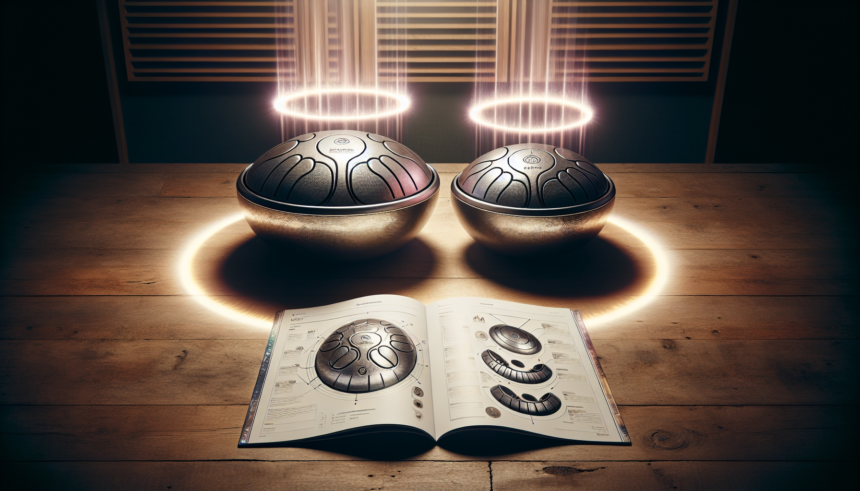The Halo handpan is a captivating musical instrument that has inspired musicians and music enthusiasts around the world. With its ethereal sounds and unique design, it offers a rewarding experience for both players and listeners. Whether you are new to musical instruments or an experienced musician looking for something different, the Halo handpan is worth exploring. This guide will introduce you to the essential aspects of Halo handpans, their history, and provide useful tips for beginners.
What is a Halo Handpan?
A Halo handpan is a type of steel drum that belongs to the handpan family. Handpans are a relatively recent invention, first appearing in the early 2000s. They consist of a convex steel shell with different tone fields or notes hammered into the surface. Players strike these notes with their hands or fingers, creating melodic and percussive sounds that are rich and resonant.
History and Evolution
The handpan traces its origins to the Hang, a Swiss instrument created by Felix Rohner and Sabina Schärer of PANArt in 2000. Following the Hang’s debut, other artisans around the world began experimenting with similar designs, leading to the creation of various handpan models, including the Halo handpan. Kyle Cox and Pantheon Steel introduced the first Halo handpan in 2009, gaining recognition for its high-quality craftsmanship and distinctive sound.
Features of a Halo Handpan
Halo handpans have several key features that make them stand out:
- Material: Halo handpans are made from high-quality steel, often treated to enhance durability and tonal qualities.
- Design: The design includes a central note (the “Ding”) surrounded by several other notes arranged in a circular pattern. Each note is carefully tuned to create harmonious intervals.
- Tuning: These handpans are typically tuned to a specific scale, such as D minor or C major, providing a unique aura and sonic landscape.
- Portability: Lightweight and portable, Halo handpans can be easily carried to different settings for practice or performance.
How to Play the Halo Handpan
Playing the Halo handpan involves striking the different tone fields with your hands or fingers. Unlike traditional drums, the technique is more nuanced and often requires a delicate touch to achieve the desired resonance. Here are some basic tips to get started:
Basic Playing Techniques
Here are the fundamental techniques for playing the Halo handpan:
- Finger Strikes: Use the pads of your fingers to gently tap the notes. Avoid using your nails or playing too hard, as this can distort the sound or even damage the instrument.
- Thumb Strikes: Your thumbs can also be used for striking the notes, particularly the central Ding note. Ensure to strike with the fleshy part of your thumb for a clear sound.
- Hand Flicks: A flicking motion with your hand or wrist can produce a crisp, sharp sound, adding articulation to your playing.
- Palm Hits: Using your palm to strike the handpan can add depth and a bass-like quality to the sound.
Creating Melodies
Once familiar with the basic strikes, you can practice creating melodies. Start by playing simple scales and experimenting with different rhythms and combinations of notes. The Halo handpan’s unique tuning makes it fairly easy to create harmonic melodies, even for beginners.
Buying a Halo Handpan
Purchasing a Halo handpan can be a significant investment. Here are some tips to ensure you make an informed decision:
Factors to Consider
- Quality: Look for high-quality craftsmanship. Reputable makers such as Pantheon Steel are known for their precision and attention to detail.
- Tuning: Decide on the tuning that resonates most with you. Listen to samples and consider how the scale fits your musical goals.
- Budget: Set a budget and research the price range for Halo handpans. While they can be expensive, investing in a quality instrument is often worth it.
- Availability: Handpans are often in high demand with limited availability. Be prepared for possible wait times and join waiting lists if necessary.
Where to Buy
Halo handpans can be purchased directly from makers like Pantheon Steel or through authorized dealers. Some websites also have marketplaces for second-hand instruments, but be cautious and ensure you are buying from a reputable source.
Care and Maintenance
Proper care and maintenance are essential to keep your Halo handpan in excellent condition. Here are some tips:
Cleaning
- Regular Wiping: Use a soft, dry cloth to wipe the handpan after each use. This helps to remove oils and impurities from your hands that can affect the steel.
- Deep Cleaning: Occasionally, use a mild soap solution on a damp cloth to clean the surface, followed by thorough drying.
Storage
- Protective Case: Store your handpan in a protective case when not in use to guard against scratches and damage.
- Environment: Keep the instrument in a dry, moderate-temperature environment to prevent rust and other damage. Avoid exposing it to extreme heat or cold.
Joining the Handpan Community
One of the joys of playing the Halo handpan is joining a global community of enthusiasts. Here are some ways to connect with others:
Online Forums and Groups
Join online forums and social media groups dedicated to handpan players. Platforms like Facebook, Reddit, and specialized forums offer a wealth of knowledge, advice, and camaraderie.
Workshops and Festivals
Attend workshops, festivals, and gatherings where players come together to share their skills and experiences. These events provide opportunities for learning, networking, and enjoying live performances.
Conclusion
The Halo handpan is a beautiful and melodious instrument that offers endless possibilities for musical exploration. From its intriguing history to the basics of playing and maintenance, this guide should help you get started on your journey with confidence. Remember, the key to mastering the handpan lies in patience and practice, so take your time to enjoy the process. Engage with the community, experiment with different techniques, and most of all, let your creativity flow.
FAQs
- 1. How long does it take to learn to play the Halo handpan?
- Learning to play the Halo handpan varies for each person. With regular practice, beginners can start playing simple melodies within a few weeks. Mastery involves continued practice and exploration over months or even years.
- 2. Can I play Halo handpan without any musical background?
- Yes, you can! The Halo handpan is accessible to people with no prior musical experience. Its intuitive design and harmonic tuning make it easy to create pleasant sounds and rhythms.
- 3. How is a Halo handpan tuned?
- A Halo handpan is tuned by skilled artisans who precisely hammer the steel to achieve specific notes. Each handpan is usually tuned to a particular scale, such as a major or minor scale, for harmonious sound.
- 4. What is the price range for a Halo handpan?
- The price of a Halo handpan can range from $1,500 to $3,000 or more, depending on the maker, material, tuning, and other factors. Investing in a high-quality instrument can provide better sound quality and longevity.
- 5. Can I travel with my Halo handpan?
- Yes, Halo handpans are portable and can be carried for travel. It is essential to use a protective case to prevent damage during transport. Many players join and connect through handpan gatherings and festivals worldwide.





